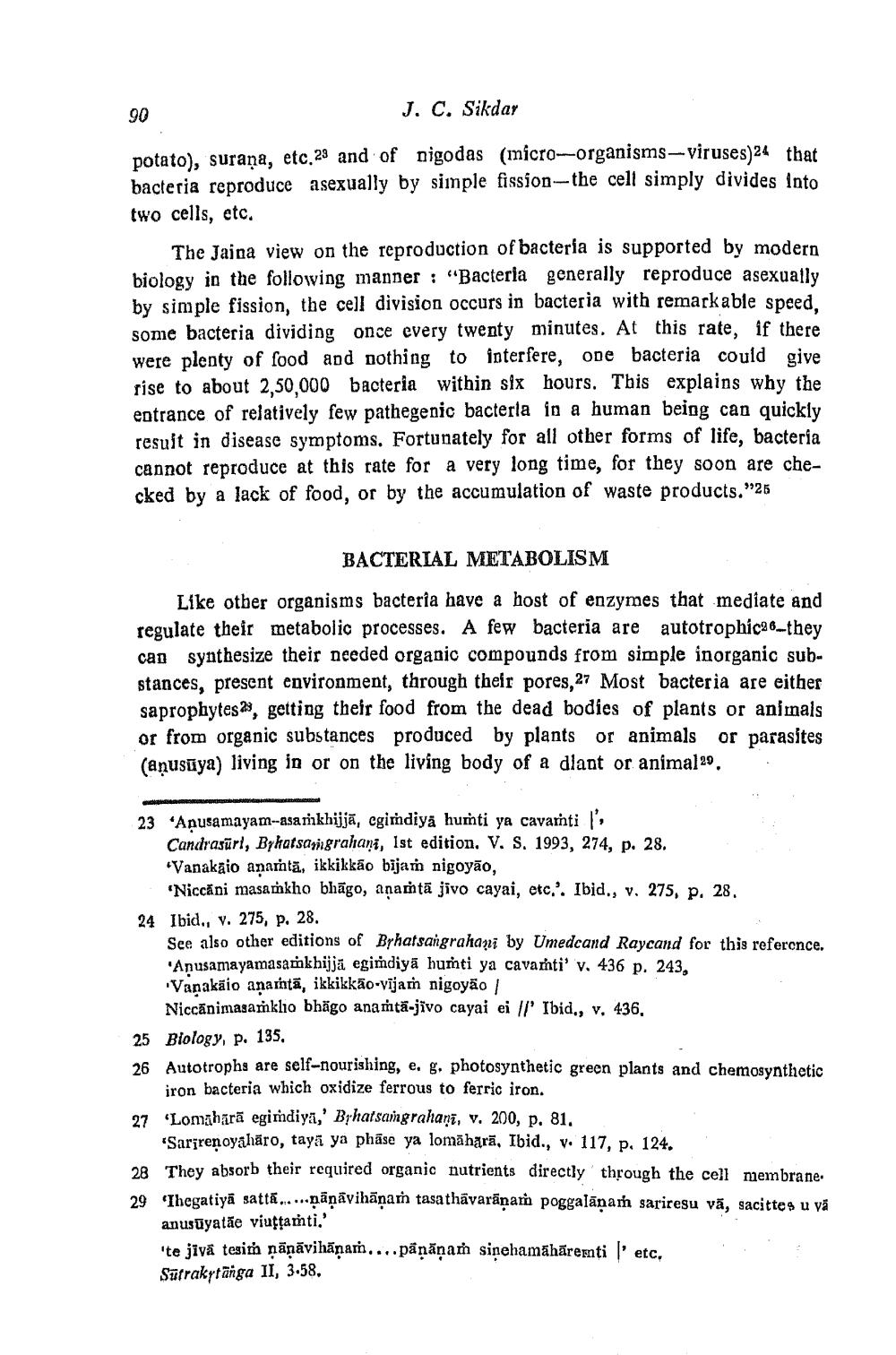________________
J. C. Sikdar
potato), surana, etc. 23 and of nigodas (micro-organisms-viruses) 24 that bacteria reproduce asexually by simple fission-the cell simply divides into two cells, etc.
90
The Jaina view on the reproduction of bacteria is supported by modern biology in the following manner: "Bacteria generally reproduce asexually by simple fission, the cell division occurs in bacteria with remarkable speed, some bacteria dividing once every twenty minutes. At this rate, if there were plenty of food and nothing to interfere, one bacteria could give rise to about 2,50,000 bacteria within six hours. This explains why the entrance of relatively few pathegenic bacteria in a human being can quickly resuit in disease symptoms. Fortunately for all other forms of life, bacteria cannot reproduce at this rate for a very long time, for they soon are checked by a lack of food, or by the accumulation of waste products."25
BACTERIAL METABOLISM
Like other organisms bacteria have a host of enzymes that mediate and regulate their metabolic processes. A few bacteria are autotrophic 6-they can synthesize their needed organic compounds from simple inorganic substances, present environment, through their pores, 27 Most bacteria are either saprophytes, getting their food from the dead bodies of plants or animals or from organic substances produced by plants or animals or parasites (anusuya) living in or on the living body of a dlant or animal 29.
23 Anusamayam-asamkhijja, cgimdiya humti ya cavarti '
Candrasuri, Byhatsamgrahan, 1st edition. V. S. 1993, 274, p. 28.
Vanakaio anamta, ikkikkão bijaṁ nigoyão,
'Niccani masamkho bhago, anamta jivo cayai, etc.. Ibid., v. 275, p. 28.
24 Ibid., v. 275, p. 28.
See also other editions of Brhatsangrahani by Umedcand Raycand for this reference. 'Anusamayamasamkhijja egimdiya humti ya cavamti' v. 436 p. 243,
Vanakäio anamta, ikkikkão-vijam nigoyão |
Niccanimasaṁklio bhago anamta-jivo cayai ei //' Ibid., v. 436.
25 Biology, p. 135.
26 Autotrophs are self-nourishing, e. g. photosynthetic green plants and chemosynthetic iron bacteria which oxidize ferrous to ferric iron.
27 'Lomahara egimdiya,' Brhatsaṁgrahan, v. 200, p. 81.
'Sarjrenoyahāro, taya ya phase ya lomāhārā, Ibid., v. 117, p. 124.
28 They absorb their required organic nutrients directly through the cell membrane.
29 'Thegatiya satta.....näṇavihāņam tasathavaraṇam poggalanam sariresu vã, sacittes u vā anusuyatãe viuṭṭamti.'
'te jivä tesim ṇāṇāvihāṇam....päṇāṇam sinehamähäremti ' etc. Sutrakytänga II, 3.58.




